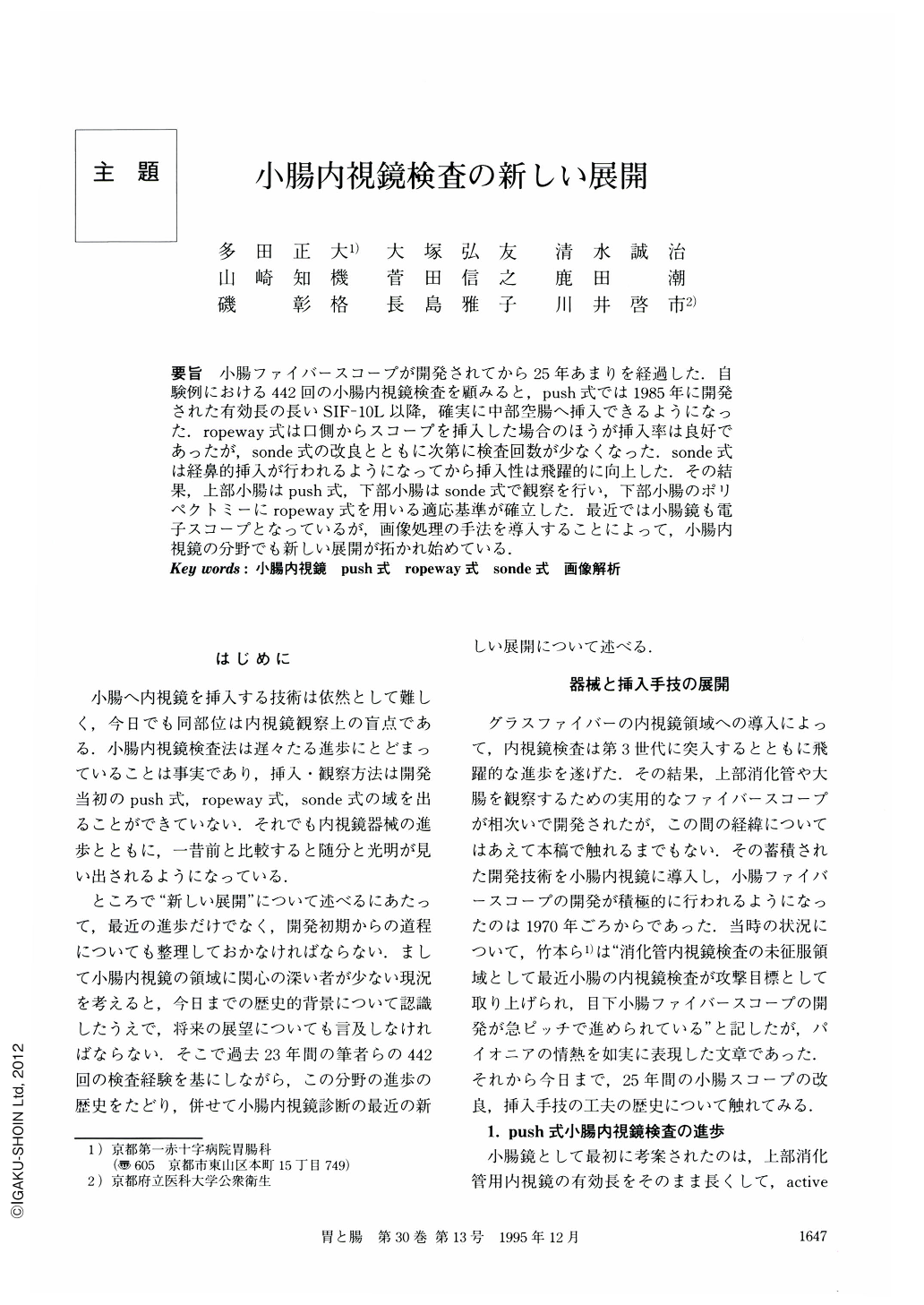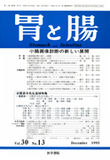Japanese
English
- 有料閲覧
- Abstract 文献概要
- 1ページ目 Look Inside
- サイト内被引用 Cited by
要旨 小腸ファイバースコープが開発されてから25年あまりを経過した.自験例における442回の小腸内視鏡検査を顧みると,push式では1985年に開発された有効長の長いSIF-10L以降,確実に中部空腸へ挿入できるようになった.ropeway式は口側からスコープを挿入した場合のほうが挿入率は良好であったが,sonde式の改良とともに次第に検査回数が少なくなった.sonde式は経鼻的挿入が行われるようになってから挿入性は飛躍的に向上した.その結果,上部小腸はpush式,下部小腸はsonde式で観察を行い,下部小腸のポリペクトミーにropeway式を用いる適応基準が確立した.最近では小腸鏡も電子スコープとなっているが,画像処理の手法を導入することによって,小腸内視鏡の分野でも新しい展開が拓かれ始めている.
Three types of small intestinal endoscopes have been developed (push type, ropeway type, and sonde type). Each type has both merits and demerits. Over the last 24 years, 442 patients underwent, enteroscopic examination in our clinic using several types of enteroscope. The push type was most frequently used and the sonde type was followed. The ropeway type has been rarely used recently, because the sonde type enteroscope could be inserted into the distal intestine easily and safely. We commonly used the push type for observation of the proximal jejunal lesions and biopsy of diffusely spread lesions. The sonde type was used for the purpose of endoscopic polypectomy. Therefore, we could examine small intestial disease sufficiently using the appropriate apparatus.
Several kinds of video enteroscopes were devised and image processing methods to clarify video enteroscopic image were developed. Since 1993, we used band enhancement, a kind of image processing methods, in our clinic. This method enabled us to observe enteroscopic findings more clearly so that even tiny villi could be inspected. Although computer-aided image processing is still at its starting point, such a new approach may open a new field in the enteroscopic examination.

Copyright © 1995, Igaku-Shoin Ltd. All rights reserved.


